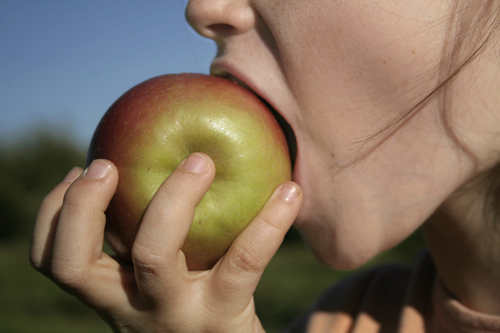Upfront, the call to shop “local” can be a tad elusive. What constitutes local? Furthermore, legitimate local shopping requires you to be vigilant and on top of your buying habits and knowledgeable about the background of the food stuffs or other goods that you are buying. For example, Crocs shoes were once made locally (from imported foreign oil) with their original manufacturing plant just down the road. In our area the fact that Crocs were locally made received lots of media attention; however, the fact that they shut down local operations (and now manufacture in China) over a year ago has not been advertised at all. I am sure that more than one faithful customer is unaware of the change.
In fact, buying material goods that are locally made, let alone, made in the USA can often be quite a challenge. So, whenever our family comes across locally made goods we get quite excited; however, most instances of material good purchasing focus simply on buying goods made in the USA. We’ve been surpised at how many Target products are actually made at home, while also being surprised that certain products, especially kitchen implements, seem to be universally made in China. Consequently, I’ve personally put off numerous purchases this year in hopes that I could track down the same or similar item neused. I’ve met with moderate success.

Local food is yet an entirely different story — it is a story that comes with all sorts of warm and fuzzy tales, and happy endings. Between our local Farmer’s Market, local farms and our CSA membership our family has been eating loads and loads of fresh produce this summer and I have been experimenting with canning, pickling and making jams. We’ve pretty much stopped buying any produce from the grocery store (except for organic raspberries to spoil the little one) and I seriously find myself wondering what I am going to do in December, January or the rest of the winter with out vine or tree ripened fruit!
When I made strawberry jam in June, I was generous with my bounty passing out jars to friends and family. I only kept 12 jars for our family, which seemed extravagant at the time, but now that I know we can eat a jar of jam in 3 days, 12 jars simply isn’t enough for an entire winter! (I made low sugar varieties, so our sugar intake is minimal over said 3 day period!) I will be making grape jelly and perhaps grape juice (or maybe even wine) in a few weeks, assuming that the raccoons do not return this year.
So, we are eating local, but what does that really mean? Why deprive oneself of bananas, and eat only peaches everyday for 7 days straight? One of the fantastic features of modern life and shipping routes is that we are able (and accustomed) to eating all sorts of produce out of season. Blueberries in January? Grapes in May? Bananas every day of the year? No problem? Well, there is that little problem, called oil, and then there is that other problem, called human induced climate change.
So, what is a healthy, fruit and veggie loving gal to do? One option would be to simply eat potatoes for breakfast, lunch and dinner. Potatoes are high in vitamin C, fiber, folic acid and more, plus they store really really well. Nah — I may love potatoes, but three meals a day, day in and day out just won’t do. Fortunately, there is a great abundunce of fruits that can be grown locally — melons, apples, peaches, starwberries, apricots, raspberries, pears, plums, grapes and more can be found in Farmer’s Market stalls and back yards across the front range. Alas the only fruit I really miss — is the beautiful blueberry (I’ve read they can be grown in barrels in the backyard, so this may be a future venture.)
And, the sweet thing about eating local and in season fruit is that it not only tastes delicious, but you can be sure that tree (or vine ripened) fruit is being delivered to you with peak nutritional value and without the guilt of fossil fuel trail (or the chemicals sprayed on fruits like apples and bananas to cause them to ripen). And, if you buy or grow it in excess, you can also preserve the fruit for consumption in the winter months. I canned peaches last fall for the first time and I must say that every time I broke out a jar to eat or make a pie, it was like infusing a gray February day with summer sunshine. I’d never much liked store bought canned peaches, but the real thing, canned in a light syrup was absolutely delightful!
In addition to saving fossil fuel and energy in general, eating local and especially supporting local and small farms helps support your local economy and keep farming alive in your community. Farming is a very difficult business these days, and many farmers must work second jobs to keep their farms a float. For this reason CSAs are very important, because the reservation monies you pay in the spring, help fund the seasons crop. And, the CSA membership, helps to ensure that the farmer earns an income, even when crops fail. The CSA is most often a very rewarding relationship for both parties, but you can also think of it a little bit like an independent subsidy for small farmers who unlike mega corporate farms get zilch from the government.
Eating local is good for you, good for the economy, good for the environment and a great way to get involved in your local community. So, if you haven’t yet hit your local Farmers’ Market the season is going strong, so get out there and EAT LOCAL! Your heart will thank you!